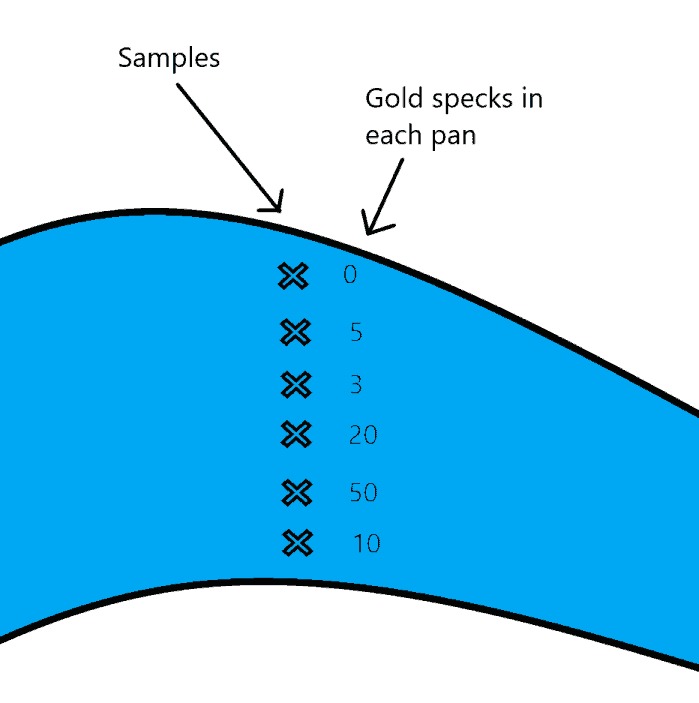
This person says that it is necessary to make panning samples every certain amount of feet. in this graph he divided them in six parts to be able to find the pay streak.
I have the doubt if there is another better method, I mean if it will be necessary to look beyond the first and last zone or if it can be done with less samples. or if there is another more advanced graphical method, like coordinates.



